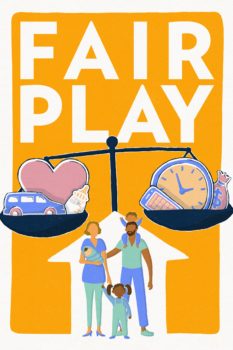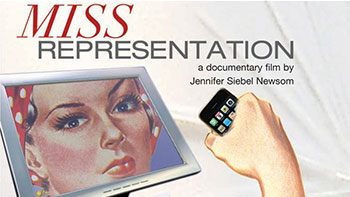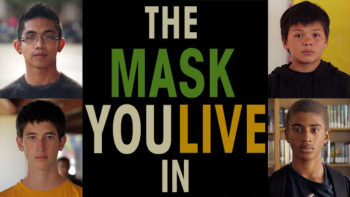by Rachel Grate
The phrase “Girl Power” appears in my mind bedazzled and engraved on a background of pink glittery flowers. I don’t know why, and I don’t know when it started, but a simple Google image search proves that this isn’t my own exclusive creation.
Yet, “Girl Power” isn’t a phrase I think of often. As a feminist, one would imagine the phrase would resonate with me, but some of the previously mentioned connotations had scared me off the term completely. It wasn’t until recently that I was reminded of its existence, from a most unlikely source: a Crystal Light Energy commercial.
My negative response to that statement matched her friends critical “Yeah right, ‘cuz we can’t have a guy’s energy drink.” I appreciated the (likely intentional) poke at Dr. Pepper’s attempt to advertise their Dr. Pepper “10” drink as “not for women.” However, two wrongs don’t make a right, and I couldn’t shake the feeling that this ad fell securely in the “wrong” category.
My intuition was accurate, as her doubtful friend is soon proved wrong in her criticism of the “girly” drink when her purse is stolen and her friend saves the day. The Crystal Light drinker chases the two thieves on their motorcycle through the city and into a desert, where she grabs back the purse and a narrator proudly explains that the drink is “Girl power to go.”
At this statement, the two men run away terrified, and I realized my problem with the ad. Girl power is shown as the worst fear of these idiotic men, placing feminism in a dichotomy against male integrity. But feminism – and true girl power – isn’t about putting men down, it’s about pulling women up until we’re all on the same level.
Beyond the polarizing gender divisions the commercial promotes, lies another problem: the commercial, under all its pretense of girl power, is for a diet drink. Part of the estimated $61 billion dollar industry designed to make both genders (though more often women) feel inferior – not empowered.
In the past few weeks, MissRepresentation.org has focused on the magazine industry’s creation of unhealthy body ideals for women in our #KeepItReal campaign. What we didn’t explore as closely, however, is that this Photoshop “industry standard” exists because of close ties between magazines and the advertisement industry.
One example of this link (that Naomi Wolf discusses in The Beauty Myth) is a prominent women magazine that lost one of their biggest advertisers, Clairol hair color company, after they featured gray-haired models in a fashion spread. The magazine never again positively portrayed gray-haired women. The same scenario plays out on an even larger scale with the diet industry.
So it struck me as a bit suspicious when I realized that the only other place I had heard the phrase “Girl Power” recently was in – you guessed it – magazines. Magazines filled with instructions on how to do our hair or “tighten our abs” or “get a guy”, because sexual power seems to be the only kind of girl power that matters. Or at least that’s the message I’ve been getting.
For instance, look at the portrayal of female Olympic athletes in major magazines. As Jezebel discussed, the Vogue spread “Wonder Women: Team USA’s Female Olympic Athletes” rarely portrayed the women athletically. Instead, the athletes were sexualized, mostly dressed in suggestive clothing unrelated to their sport. Soccer player Sydney Leroux (below) didn’t even have her face shown in her shot.
Despite their obvious physical power, the only “Girl Power” these women are portrayed as possessing is sexual. In contrast, the male athletes were shown doing their sports, often with female models as props.
The lack of consideration for other types of female empowerment reminded me of the recent Jennifer Hudson Weight Watchers commercials, in which she declared that “Before Weight Watchers, my world was can’t.” Despite all of her achievements – American Idol, winning an Academy Award – without the sexual power of the “perfect” body, she had achieved nothing. (At least, that’s the disturbing undertone that critics protested, causing a new release of the ad that changed the line to “When it came to losing weight before Weight Watchers, my world was can’t.”)
This distorted view of girl power starts young. A line of power girl action figures from Mattel features provocatively dressed women with large breasts. The female superhero’s physical strength is implied, but they still can’t fight fully dressed.
From the toys kids play with to the bodies women strive for, “Girl Power” has become a packaged good, sexualized and sold to us from birth under the guise of feminism. The phrase has been so diluted (and bedazzled) that the only “power” it leaves girls with is the “power” to diet, or the “power” to conform to the degrading images society sells us. The problem is, girl power – or empowerment of any sort – isn’t something that can be bought. Empowerment is something that must be lived, and we can all start living by #NotBuyingIt and calling out these advertiser’s lies.
Rachel Grate is an intern at MissRepresentation.org and a student at Scripps College, where she is studying English and Gender & Women’s Studies. Connect with her via LinkedIn or read more of her work on her blog.



